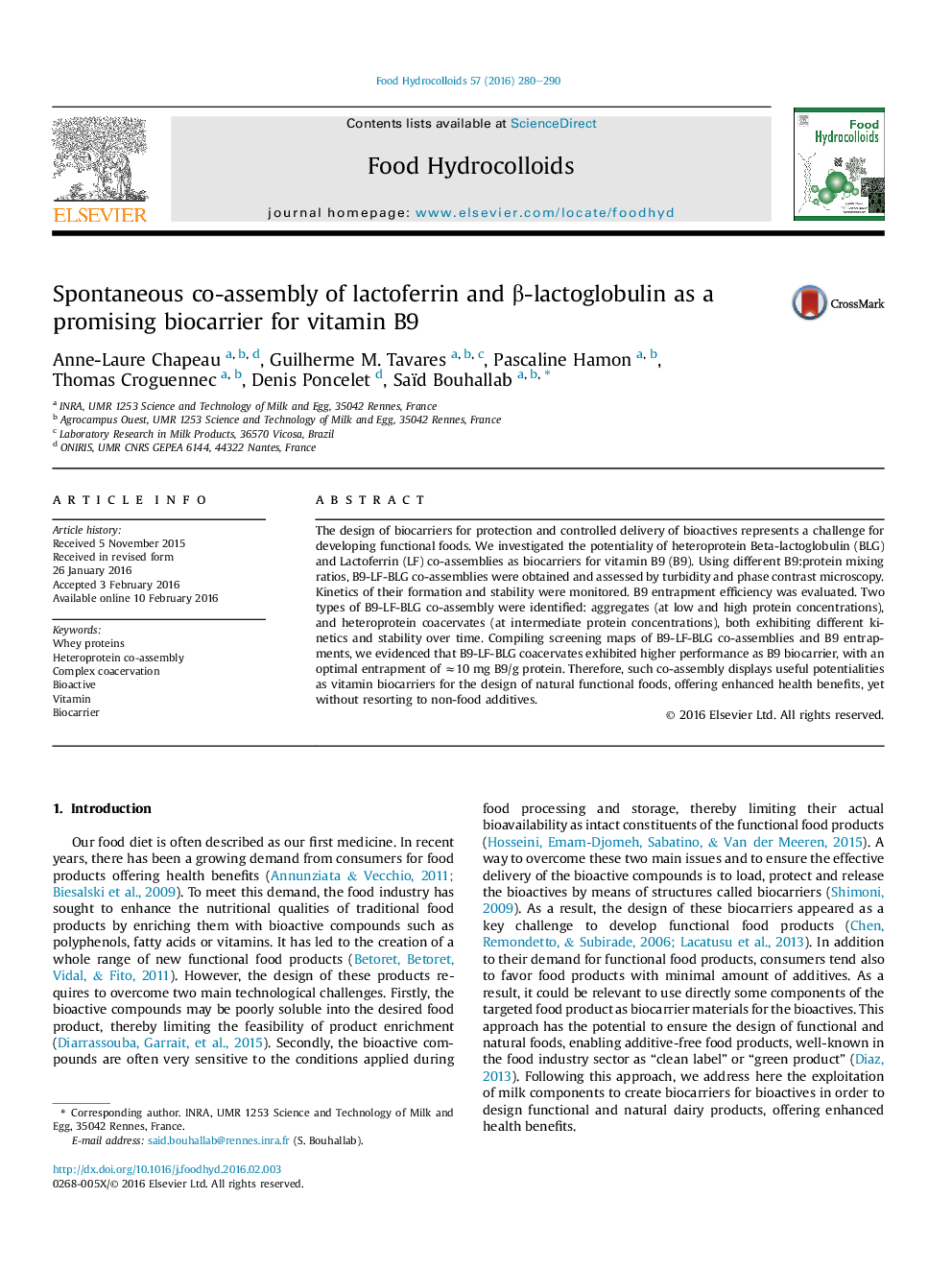| Article ID | Journal | Published Year | Pages | File Type |
|---|---|---|---|---|
| 604235 | Food Hydrocolloids | 2016 | 11 Pages |
•Lactoferrin (LF) and β-lactoglobulin (BLG) co-assemble in the presence or absence of vitamin B9.•Following B9/(BLG + LF) molar ratio, aggregates or heteroperotein coacervates were formed.•Heteroprotein coacervates were effective in encapsulating B9.•B9-LF-BLG coacervates are an efficient biocarrier with entrapment of 10–12 mg B9/g proteins.
The design of biocarriers for protection and controlled delivery of bioactives represents a challenge for developing functional foods. We investigated the potentiality of heteroprotein Beta-lactoglobulin (BLG) and Lactoferrin (LF) co-assemblies as biocarriers for vitamin B9 (B9). Using different B9:protein mixing ratios, B9-LF-BLG co-assemblies were obtained and assessed by turbidity and phase contrast microscopy. Kinetics of their formation and stability were monitored. B9 entrapment efficiency was evaluated. Two types of B9-LF-BLG co-assembly were identified: aggregates (at low and high protein concentrations), and heteroprotein coacervates (at intermediate protein concentrations), both exhibiting different kinetics and stability over time. Compiling screening maps of B9-LF-BLG co-assemblies and B9 entrapments, we evidenced that B9-LF-BLG coacervates exhibited higher performance as B9 biocarrier, with an optimal entrapment of ≈10 mg B9/g protein. Therefore, such co-assembly displays useful potentialities as vitamin biocarriers for the design of natural functional foods, offering enhanced health benefits, yet without resorting to non-food additives.
Graphical abstractFigure optionsDownload full-size imageDownload as PowerPoint slide
